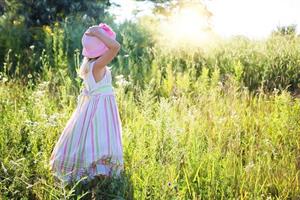PDF chapter test TRY NOW
Oh! Meadows have surprises
And many things to tell;
You may discover these yourself,
If you look and listen well.
And many things to tell;
You may discover these yourself,
If you look and listen well.
Explanation:
The final stanza of the poem begins with a repetition of the first line from the first stanza. Hence, the line "meadows have surprises" becomes a refrain. The stanza reinforces the earlier spoken idea as to how meadows can become a source of surprise.
The meadows also have many things to tell. It can tell us about the various animals, birds, insects, and plants in the meadows. You can spot a butterfly with its "drinking straws", a rabbit that hops and disappears, a dandelion that turns into "airy parachutes", and several other beautiful things. You can listen to the low melodies of a brook or can discover the various meadow houses. Hence, meadows have several surprises.
But you will discover these only if you know where to look and how well to listen.
The line "you may discover these yourself" can also be seen as a repetition of the line "you can find them if you look" from the first stanza. Though the lines are not repeated word-for-word, the essence and the word order are retained in both the lines. Hence, it can be seen as a form of repetition.
The meadows also have many things to tell. It can tell us about the various animals, birds, insects, and plants in the meadows. You can spot a butterfly with its "drinking straws", a rabbit that hops and disappears, a dandelion that turns into "airy parachutes", and several other beautiful things. You can listen to the low melodies of a brook or can discover the various meadow houses. Hence, meadows have several surprises.
But you will discover these only if you know where to look and how well to listen.
The line "you may discover these yourself" can also be seen as a repetition of the line "you can find them if you look" from the first stanza. Though the lines are not repeated word-for-word, the essence and the word order are retained in both the lines. Hence, it can be seen as a form of repetition.

You may discover the surprises if you look and listen well
Meanings of difficult words from the stanza:
Sl. No. | Words | Meanings |
1 | Hops | Move by jumping with two or all feet at once |
2 | Nectar | A sugary fluid secreted within flowers, and this is eventually collected by bees to make into honey |
Reference:
National Council of Educational Research and Training (2007). Honeycomb. Meadow Surprises: Lois Brandt Phillips (pp. 123-124). Published at the Publication Division by the Secretary, National Council of Educational Research and Training, Sri Aurobindo Marg, New Delhi.
